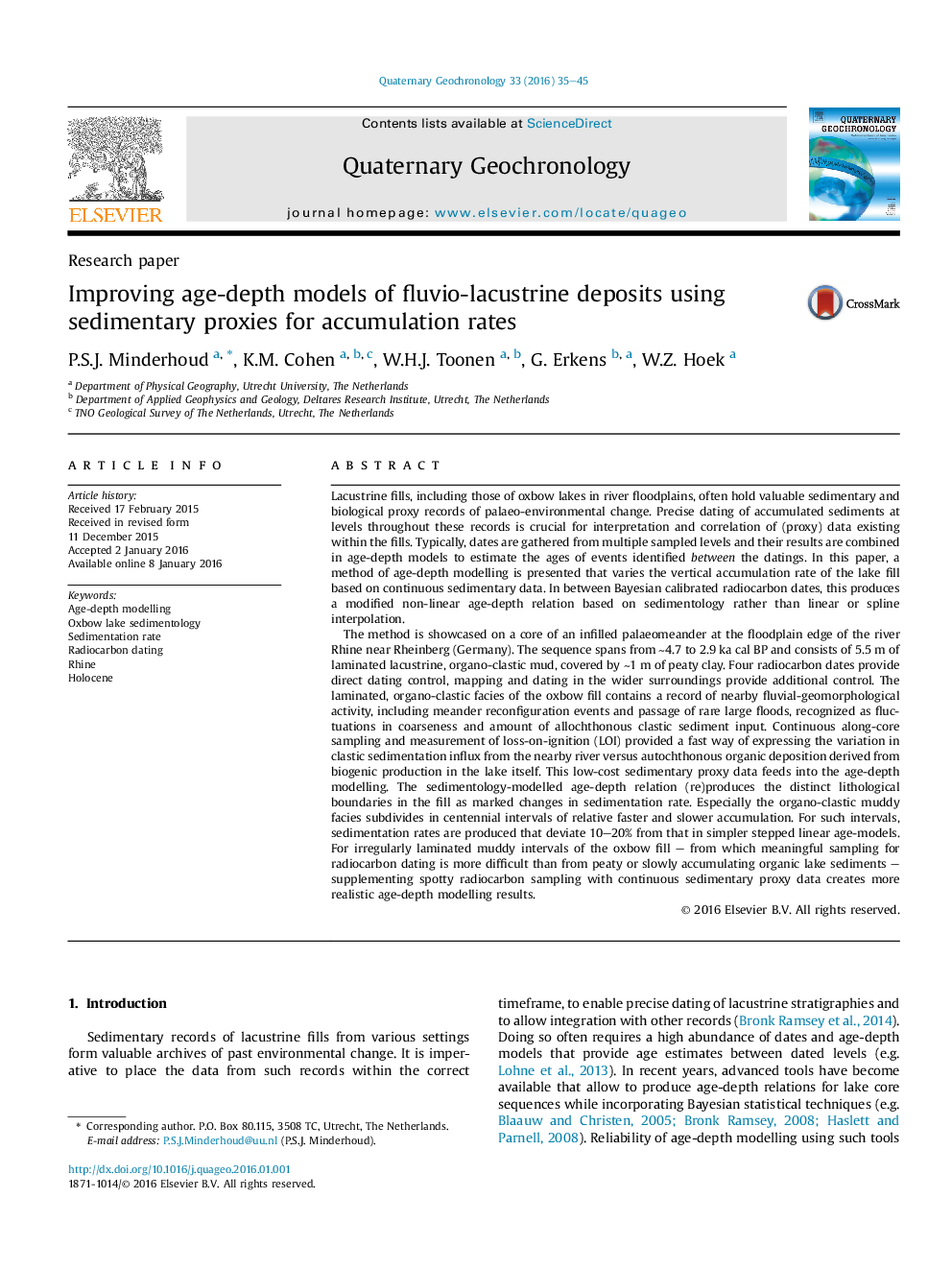| کد مقاله | کد نشریه | سال انتشار | مقاله انگلیسی | نسخه تمام متن |
|---|---|---|---|---|
| 4724860 | 1639843 | 2016 | 11 صفحه PDF | دانلود رایگان |
• Oxbow lake fills contain flood-induced event-stratigraphies indicating high fluctuations in sedimentation speed.
• Standard age models are unable to reproduce the spasmodic behaviour of oxbow lake fills.
• Sedimentological analysis of an oxbow fill reveals high-resolution insight in accelerations and deceleration of sedimentation.
• Combining sedimentology with C-14 calibration creates a more realistic (oxbow) lake fill age-depth model.
Lacustrine fills, including those of oxbow lakes in river floodplains, often hold valuable sedimentary and biological proxy records of palaeo-environmental change. Precise dating of accumulated sediments at levels throughout these records is crucial for interpretation and correlation of (proxy) data existing within the fills. Typically, dates are gathered from multiple sampled levels and their results are combined in age-depth models to estimate the ages of events identified between the datings. In this paper, a method of age-depth modelling is presented that varies the vertical accumulation rate of the lake fill based on continuous sedimentary data. In between Bayesian calibrated radiocarbon dates, this produces a modified non-linear age-depth relation based on sedimentology rather than linear or spline interpolation.The method is showcased on a core of an infilled palaeomeander at the floodplain edge of the river Rhine near Rheinberg (Germany). The sequence spans from ∼4.7 to 2.9 ka cal BP and consists of 5.5 m of laminated lacustrine, organo-clastic mud, covered by ∼1 m of peaty clay. Four radiocarbon dates provide direct dating control, mapping and dating in the wider surroundings provide additional control. The laminated, organo-clastic facies of the oxbow fill contains a record of nearby fluvial-geomorphological activity, including meander reconfiguration events and passage of rare large floods, recognized as fluctuations in coarseness and amount of allochthonous clastic sediment input. Continuous along-core sampling and measurement of loss-on-ignition (LOI) provided a fast way of expressing the variation in clastic sedimentation influx from the nearby river versus autochthonous organic deposition derived from biogenic production in the lake itself. This low-cost sedimentary proxy data feeds into the age-depth modelling. The sedimentology-modelled age-depth relation (re)produces the distinct lithological boundaries in the fill as marked changes in sedimentation rate. Especially the organo-clastic muddy facies subdivides in centennial intervals of relative faster and slower accumulation. For such intervals, sedimentation rates are produced that deviate 10–20% from that in simpler stepped linear age-models. For irregularly laminated muddy intervals of the oxbow fill – from which meaningful sampling for radiocarbon dating is more difficult than from peaty or slowly accumulating organic lake sediments – supplementing spotty radiocarbon sampling with continuous sedimentary proxy data creates more realistic age-depth modelling results.
Journal: Quaternary Geochronology - Volume 33, June 2016, Pages 35–45
